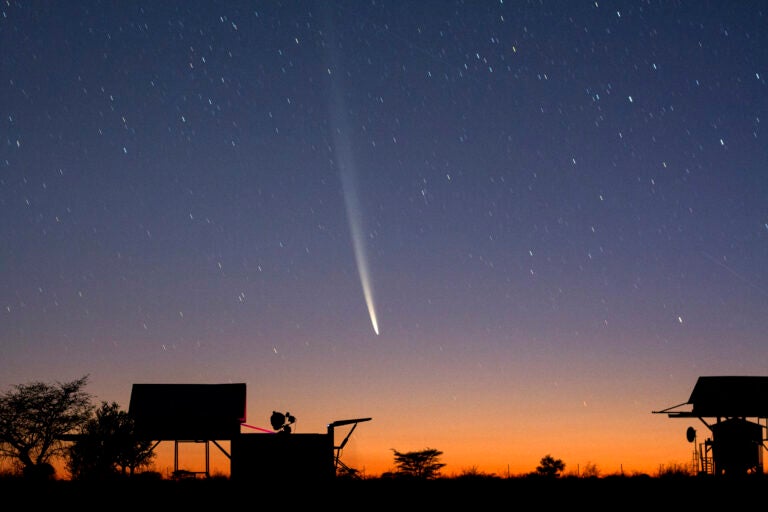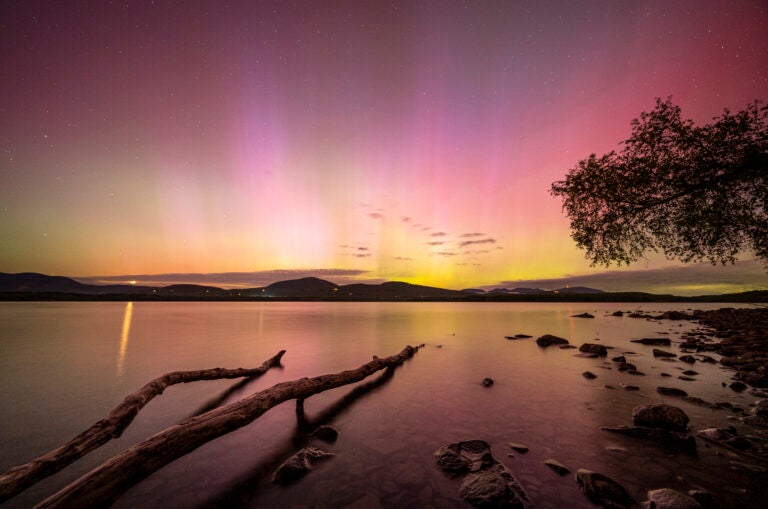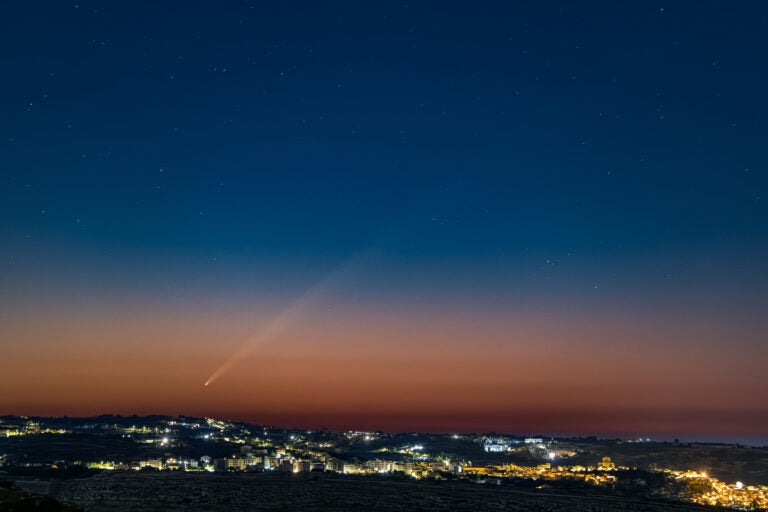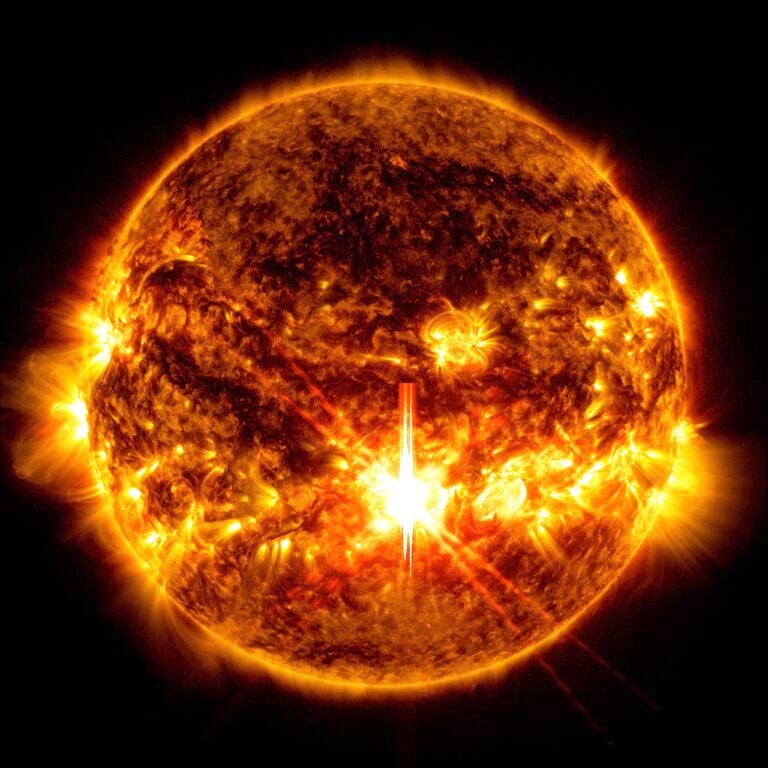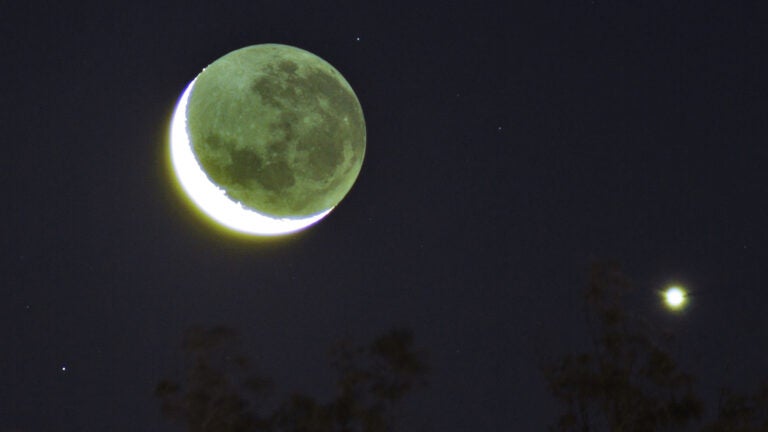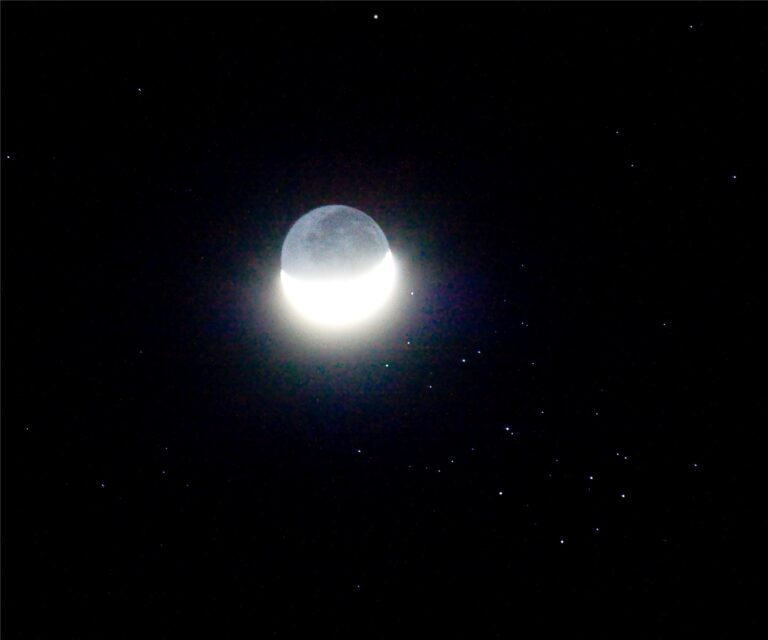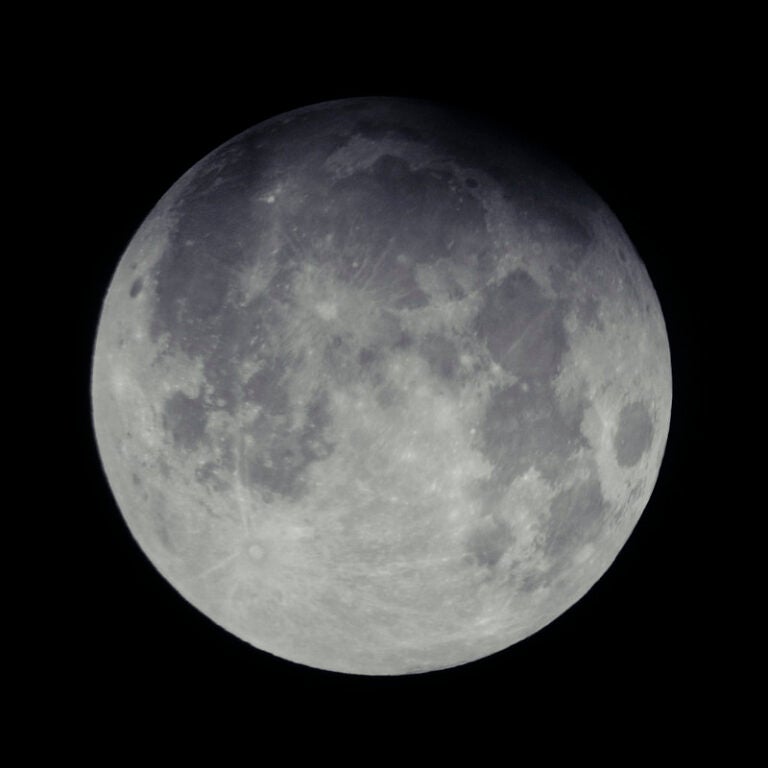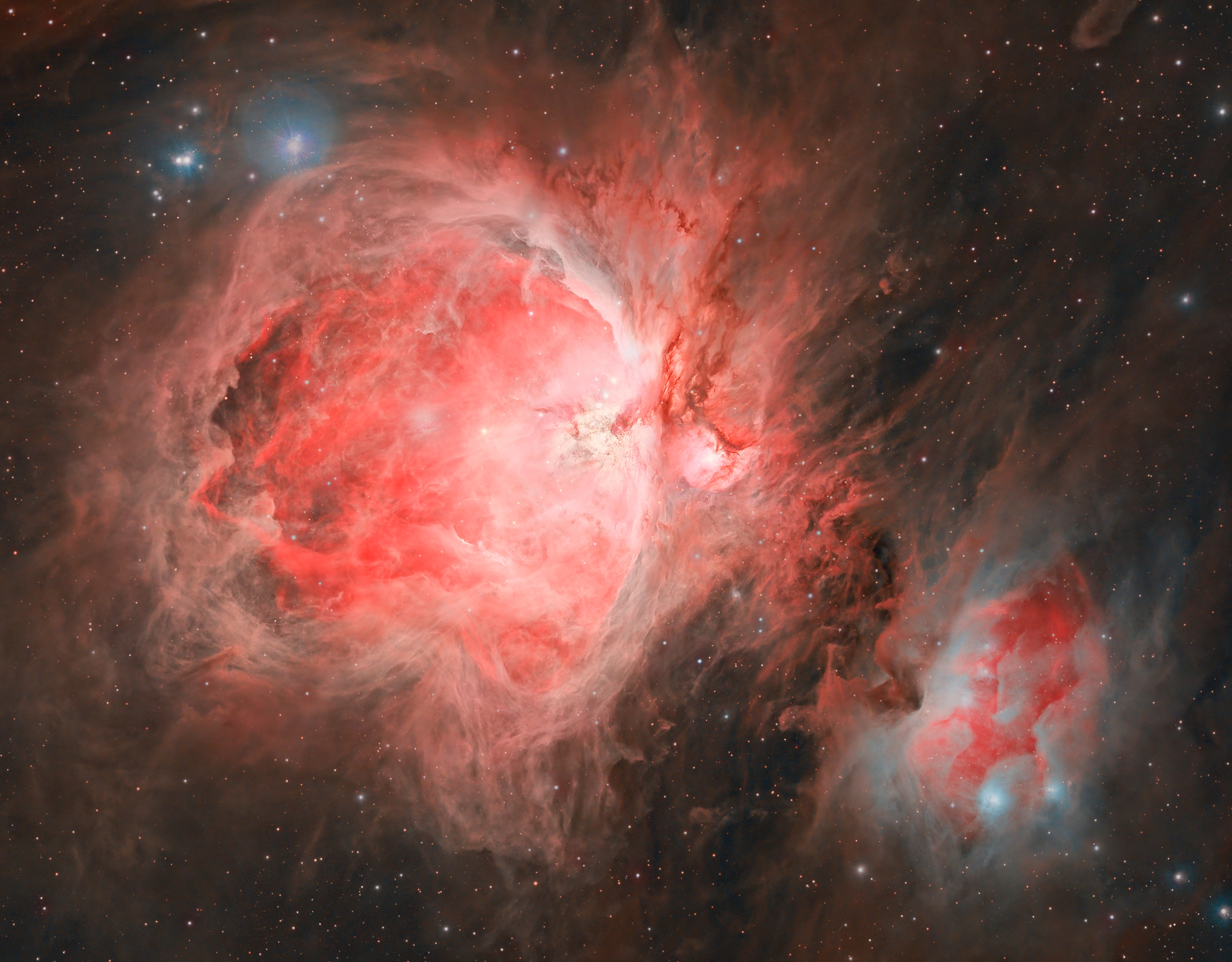
The Orion Nebula (M42) is one of the most impressive sights in the night sky — part of a complex of hydrogen gas that is producing a new generation of stars. It makes a terrific target during the winter months, even it means bundling up to get to a good dark-sky site.
Lying about 1,350 light-years away and spanning 25 light-years, the Orion Nebula appears to the naked eye as a fuzzy “star” dangling just below the three stars of Orion’s belt. But through a telescope, it becomes an expansive playground to explore. The star Theta1 Orionis resolves into a system of four stars that form the asterism known as the Trapezium. (Several more associated stars are part of an open cluster). And the related object M43 is an extension of the glowing gas of M42, cut off from it visually by a dark lane of dust. Beyond M43 lies the fainter Running Man Nebula (NGC 1973/5/7).
All of this is just one region of the larger Orion molecular cloud complex, which comprises several other famous objects like Barnard’s Loop, the Flame Nebula (NGC 2024), and the Horsehead Nebula (Barnard 33).
You can read more about the Orion Nebula in Raymond Shubinski’s feature article and in our 101 Cosmic Objects issue from January 2022.
Follow Astronomy magazine, the world’s best-selling astronomy magazine:
🌎 Website: https://astronomy.com
📖 Subscribe: http://subscribe.astronomy.com
📘 Facebook: https://www.facebook.com/AstronomyMagazine
📸 Instagram: https://instagram.com/astronomy.magazine
🐦 Twitter: https://twitter.com/AstronomyMag
Shop Celestron telescopes:
🔭 Website: https://celestron.com
Follow Dave Eicher:
📘 Facebook: https://www.facebook.com/davidjohneicher
📸 Instagram: https://instagram.com/eicher.david
🐦 Twitter: https://twitter.com/deicherstar

